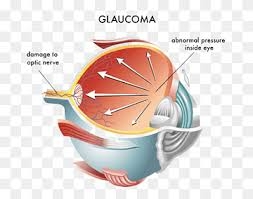Glaucoma is a group of eye conditions that can lead to irreversible vision loss and blindness if left untreated. It is characterized by damage to the optic nerve, often linked to elevated intraocular pressure (IOP). Awareness of the different types, causes, risk factors, and symptoms of glaucoma is essential for early detection and effective management.
Types of Glaucoma
Open-Angle Glaucoma
This is the most common form of glaucoma. The drainage angle between the cornea and iris remains open, but the trabecular meshwork becomes partially blocked, leading to a gradual increase in IOP. The progression is slow and typically painless, often resulting in unnoticed vision loss over time.
Narrow-Angle Glaucoma
Also known as angle-closure glaucoma, this type occurs when the drainage angle between the iris and cornea is too narrow, causing a sudden rise in IOP. This condition can present acute symptoms that require immediate medical attention.
Causes of Glaucoma
Glaucoma can be classified based on its causes into primary and secondary categories:
Primary Glaucoma
- Primary Open-Angle Glaucoma (POAG): The most common form, caused by inefficient drainage of aqueous humor, leading to a gradual increase in IOP.
- Primary Angle-Closure Glaucoma (PACG): Results from structural issues in the eye, causing a sudden closure of the drainage angle.
Secondary Glaucoma
- Pigment Dispersion Syndrome: Pigment granules from the iris disperse into the aqueous humor, blocking the trabecular meshwork and increasing IOP.
- Pseudoexfoliative Glaucoma: Caused by the buildup of fibrillary material in the eye's anterior segment.
- Trauma: Eye injuries that damage the drainage system, leading to elevated IOP.
- Inflammation: Conditions like uveitis can block the eye’s drainage system, causing secondary glaucoma.
Risk Factors for Glaucoma
Several factors increase the likelihood of developing glaucoma, including:
- Age: Risk increases significantly for those over 60.
- Family History: A genetic predisposition to glaucoma increases the risk.
- Medical Conditions: Conditions such as diabetes and hypertension contribute to the development of glaucoma.
- Eye Conditions: High myopia (nearsightedness) and hypermetropia (farsightedness) are linked to specific types of glaucoma.
- Ethnicity: African Americans, Asians, and Hispanics are at higher risk for certain types of glaucoma.
Symptoms of Narrow-Angle Glaucoma
Narrow-angle glaucoma can manifest through a range of symptoms, from mild to severe:
- Mild Symptoms: Light headaches, halos around lights, and slight eye discomfort.
- Moderate Symptoms: Blurred vision, intense eye pain, and redness.
- Severe Symptoms: Severe eye pain, nausea, vomiting, and sudden vision loss. Immediate medical attention is crucial to prevent permanent damage.
Associations with Myopia and Hypermetropia
- Myopia and Pigment Dispersion Syndrome: Myopia (nearsightedness) is often associated with pigment dispersion syndrome, where pigment granules from the iris clog the drainage system, leading to increased IOP and potential glaucoma.
- Hypermetropia and Primary Angle Closure: Hypermetropia (farsightedness) is linked to primary angle-closure glaucoma, due to shorter axial lengths and shallower anterior chambers, increasing the risk of angle closure and IOP elevation.
Conclusion
Glaucoma is a complex and potentially sight-threatening condition that requires vigilant management. Understanding its types, causes, risk factors, and symptoms can aid in early detection and effective treatment. Regular eye exams are crucial, especially for those at higher risk, to preserve vision and prevent the progression of this silent thief of sight.
If you are experiencing any symptoms or have risk factors associated with glaucoma, don’t wait—schedule an appointment with one of our consultants today. Early intervention can make a significant difference in protecting your vision.





